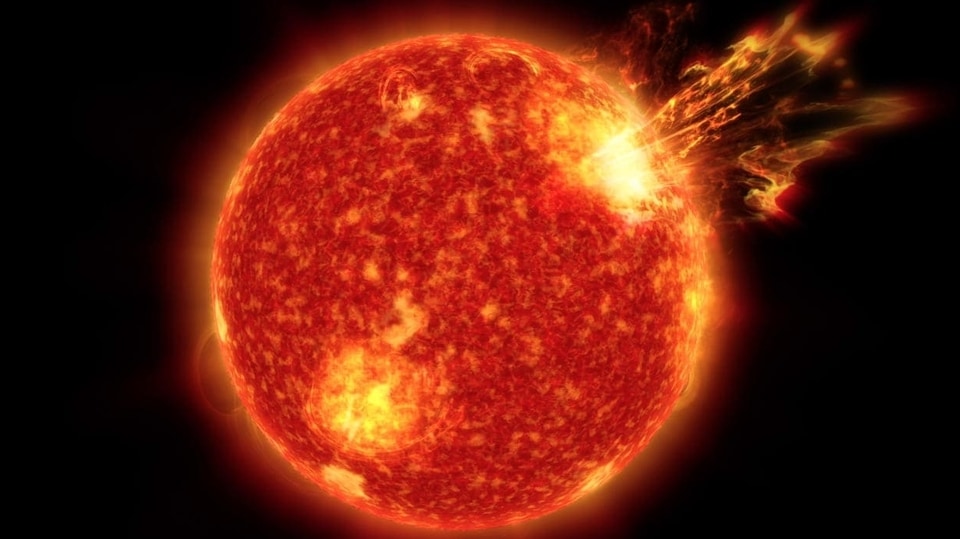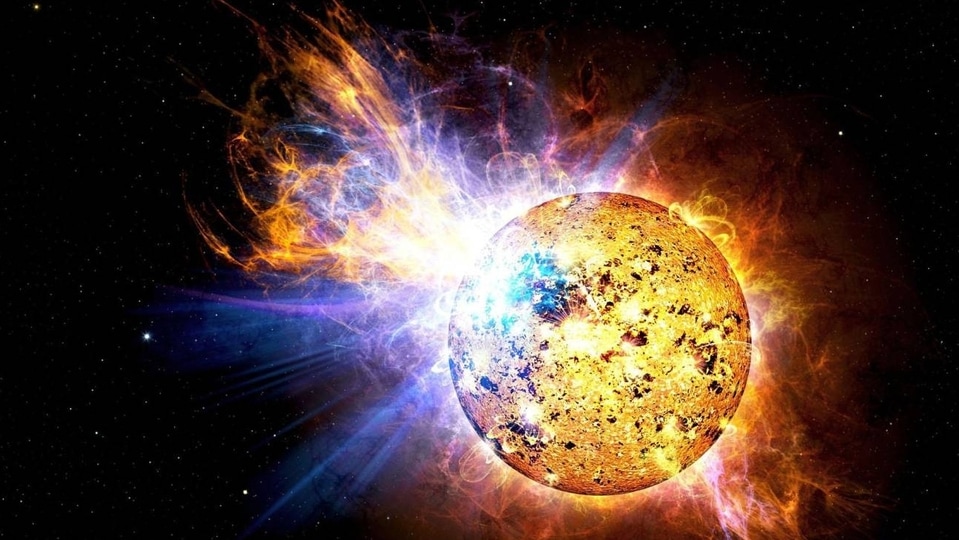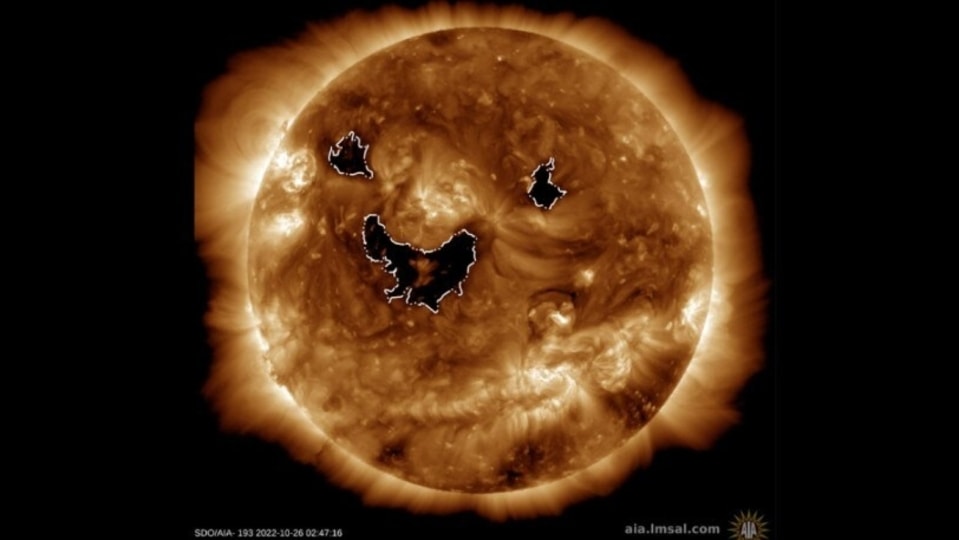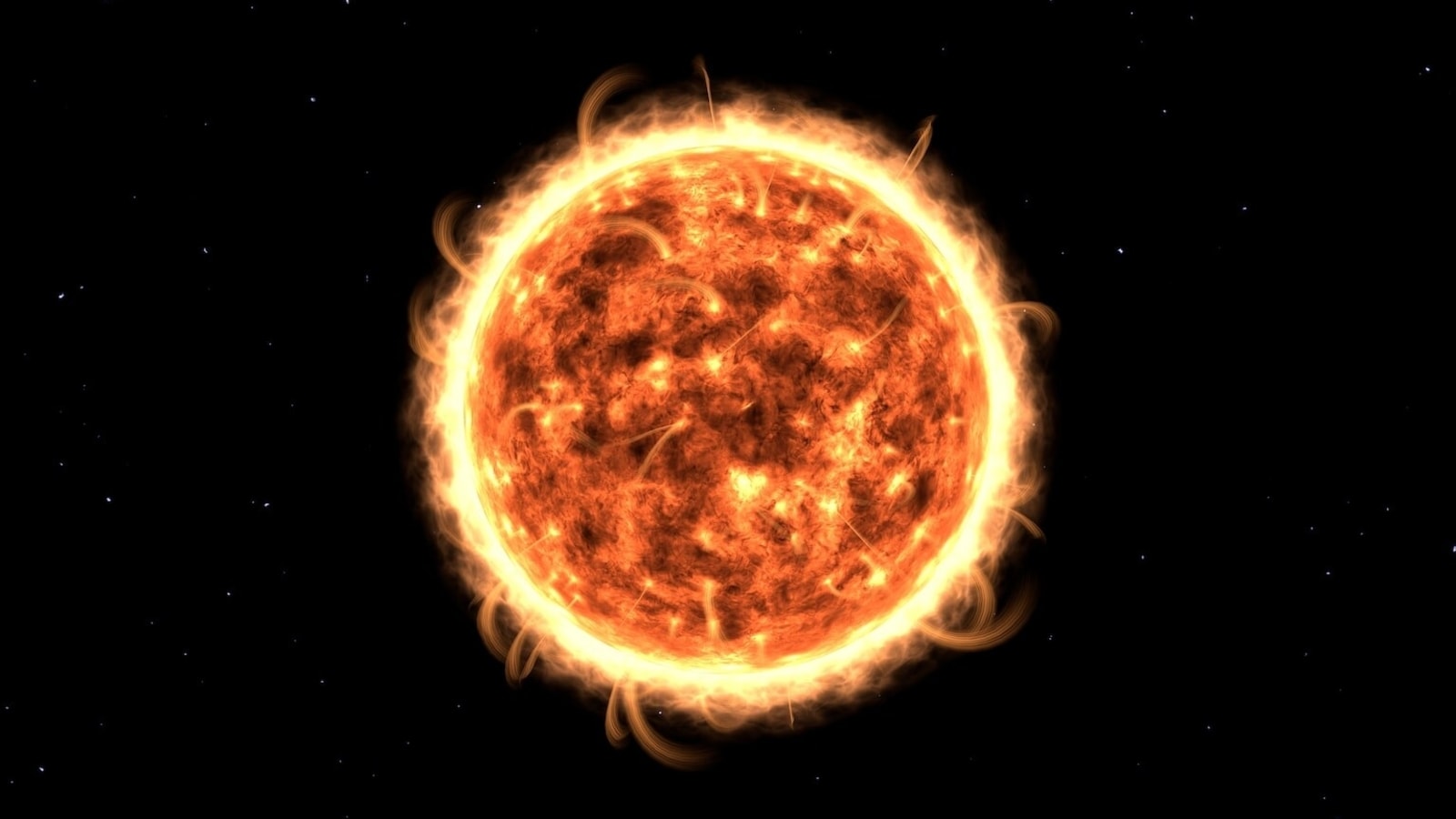Sunspot could hurl out X-class solar flares! Geomagnetic storm on the cards
A sunspot has been harbouring massive amounts of solar energy and could unleash either M-class or even X-class solar flares, followed by a geomagnetic storm, according to reports.

_1658567219974_1658567228615_1658567228615.jpg)





 View all Images
View all ImagesJust 5 months into 2023, we have already witnessed damaging solar activity bombard the Earth. Just last month, a menacing cloud of coronal mass ejection, erupting from a sunspot that was 20 times wider than Earth, struck the planet and unleashed a horrifying solar storm. This was later declared the most devastating solar storm in 6 years. It was quite surprising and unexpected. Solar activity has been on the rise for the past few months, and it is expected to increase further until solar maximum, the period of greatest solar activity during the Sun's 11-year cycle.
Now, a sunspot has been discovered on the solar surface that has the potential to release dangerous solar flares.
Danger of solar flares
According to a report by spaceweather.com, forecasters at the National Oceanic and Atmospheric Administration (NOAA) have revealed that a sunspot, named AR3315, has been observed which could unleash dangerous solar energy. This sunspot is dangerous as it currently has an unstable 'beta-gamma-delta'' magnetic field. Although this solar activity might seem harmless due to the distance of the Sun from our planet, it can cause major damage. Because of the unstable nature of this sunspot, there is a chance of not only M-class solar flares but also X-class flares!
The report further states that there is a 55% chance for M-class flares and a 10% chance for X-class flares striking the Earth! Moreover, this sunspot also has the potential to trigger geomagnetic disturbances such as a geomagnetic storm as it is directly facing the planet. As solar flares travel out directly from the flare site, if we can see it, we can be impacted by it.
How are solar flares rated?
According to NASA, solar flares are classified according to their strength on the logarithmic scale, similar to how earthquakes are measured. The smallest ones are A-class which occur at near background levels, followed by B, C, M, and X. Similar to the Richter scale for earthquakes, each letter represents a 10-fold increase in energy output. So, an X is ten times an M and 100 times a C. Within each letter class there is a finer scale from 1 to 9.
Are X-class solar flares dangerous?
X-class solar flares can create radiation storms which have the potential to not only harm the satellites but also give small doses of radiation to the people flying in airplanes at the time! Moreover, these devastating flares can disrupt global communications and bring down the power grids to create blackouts.
Catch all the Latest Tech News, Mobile News, Laptop News, Gaming news, Wearables News , How To News, also keep up with us on Whatsapp channel,Twitter, Facebook, Google News, and Instagram. For our latest videos, subscribe to our YouTube channel.





























